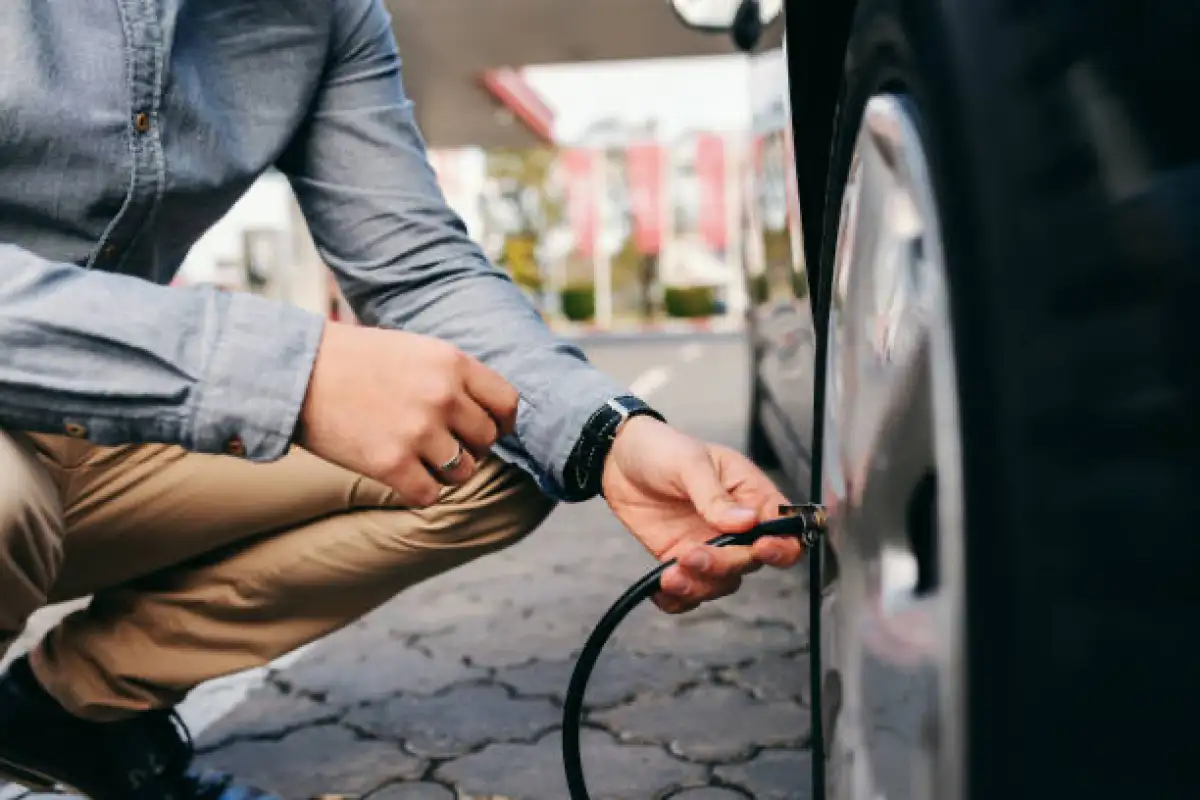Starting your journey to optimal vehicle performance is easier than you think. In this guide, we’ll walk you through everything you need to know about maintaining the perfect toyota rush tyre pressure psi. Read on to unlock simple steps to ensure your tyres are at their best!
How to Check and Adjust Your Toyota Rush Tyre Pressure

When it comes to checking and adjusting your tyre pressure, having the right tools makes all the difference. Make sure you have a digital tyre pressure gauge, a portable air compressor available at many local fuel stations (AED/SAR pricing applies), and your vehicle’s owner manual handy in the glove compartment.
Required Tools
A reliable digital tyre pressure gauge
A portable air compressor (commonly found at UAE and GCC fuel stations, priced around AED 40-120 / SAR equivalent)
Your vehicle’s owner manual for reference
Step-by-Step Process
Begin by ensuring your vehicle is parked and the tyres have cooled down. You should ideally wait for at least three hours after driving.
Remove the valve cap from each tyre and press the gauge firmly onto the valve stem. This will give you an accurate reading of the current tyre pressure.
Compare your readings with the recommended PSI levels below. A clear table to guide you:
Driving Condition | Front Tyres | Rear Tyres |
|---|---|---|
Normal Load | 32 PSI | 32 PSI |
Full Load | 35 PSI | 38 PSI |
Use your portable air compressor to add or release air until the tyres reach the desired pressure.
Recheck the tyre pressure once you’ve made adjustments to ensure accuracy.
Why Maintaining Correct Tyre Pressure Matters

Correct tyre pressure is vital for multiple reasons. You’ll notice improved handling, reduced braking distances, and increased stability, especially on busy highways and roundabouts. Maintaining the proper PSI can help extend the tyre’s lifespan by up to 15-20% and enhance fuel efficiency significantly. Additionally, safe tyre pressure minimizes uneven wear and prevents premature tyre damage, which is crucial when considering both personal safety and cost savings over time.
Safety Benefits
Reduced stopping distances and improved vehicle stability on tricky roads
Even wear can prevent blowouts and maintain proper vehicle handling
Cost Savings
Higher fuel efficiency along with prolonged tyre life
Saving AED/SAR on unnecessary tyre replacements and extra maintenance costs
Seasonal Pressure Adjustments

As temperatures fluctuate, so can the pressure in your tyres. During the hot summer months—when you might experience temperatures exceeding 45°C—the air inside your tyres expands. You might find it helpful to reduce the pressure by 2-3 PSI during the hottest parts of the day. Regular, weekly checks during these periods can help you adapt quickly to any changes.
In cooler winter mornings, tyre pressure tends to drop. A slight increase of 1-2 PSI when temperatures fall below 20°C will keep your tyres performing well, ensuring that you always have optimum control no matter the weather.
Load-Specific Pressure Settings
Knowing the impact of extra weight is essential, particularly if you often transport cargo or travel with several passengers. When your Toyota Rush is loaded with extra passengers or heavy luggage, the recommended tyre pressures adjust to 35 PSI for the front tyres and 38 PSI for the rear tyres. This adjustment is especially important if you frequently use roof racks, trailers, or if your trunk carries a significant load.
Recommended Settings
For typical passenger use with 1-4 occupants:keep the tyre pressure at 32 PSI for all tyres.
When carrying heavier loads, use the updated pressure settings to ensure safe driving dynamics and even tire wear.
Maintenance Technology Updates

Staying updated with the latest tyre maintenance technology can simplify your life. The 2025 models of the Toyota Rush come equipped with advanced Tyre Pressure Monitoring Systems (TPMS) that offer real-time readings and automatic temperature compensations. These systems provide predictive alerts to let you know ahead of time when you might need to check or adjust your tyre pressure.
Enhanced TPMS Features
Real-time display of tyre pressure values
Automatic adjustments based on ambient temperature changes
Predictive alerts designed to prevent sudden pressure drops
Smart Maintenance Tools
Bluetooth-enabled tyre pressure gauges are now available, cost starting at around AED 150 / SAR equivalent
Automated mobile applications linked with regional ADNOC and local stations help track your tyre pressure over time
Long-Term Tyre Care Strategies
Investing time in regular tyre maintenance can make a major difference in the long run. It’s recommended to rotate your tyres every 8,000 km, using a front-to-back pattern, to promote even tread wear. Additionally, check your tyre pressure at least every two weeks, especially before long trips on major highways like the E11 or E66.
Maintenance Tips
Rotate your tyres every 8,000 km to maintain balanced wear
Check the tyre pressure every 14 days if you drive daily
After any incidents like hitting curbs or encountering potholes, recheck your tyre pressure immediately
By maintaining optimal toyota rush tyre pressure psi, you can see improved fuel economy by as much as 8-10% and extend your tyre lifespan up to 70,000 km under normal driving conditions.
FAQ

Q1:What is the ideal Toyota Rush tyre pressure PSI for everyday driving?
For everyday driving, you should maintain a tyre pressure of about 32 PSI for both front and rear tyres when under normal load conditions. This guideline ensures that you benefit from improved fuel efficiency and stable handling. If you’re carrying additional passengers or cargo, slightly higher PSI settings might be necessary to accommodate the extra weight. It’s always wise to refer to your vehicle’s owner manual for exact recommendations and adjust accordingly. Regularly checking your tyre pressure every couple of weeks can help you stay on top of these adjustments.
Q2:How often should I check my Toyota Rush tyre pressure?
You should ideally check your tyre pressure every 14 days if you drive your car on a daily basis. Frequent checks are especially important in climates that experience high temperature fluctuations since tyre pressure can change quickly. Before embarking on long journeys, a quick check ensures your safety and maximum tyre performance. Carrying out these regular checks not only enhances your vehicle’s efficiency but also prolongs tyre life by preventing uneven wear.
Q3:How do seasonal changes affect my tyre pressure and what adjustments should I make?
Seasonal changes can have a noticeable impact on your tyre pressure. During the intense heat of summer, the air inside your tyres can expand, leading to slightly higher pressure levels, so you may need to reduce the PSI by 2-3 units temporarily. In contrast, during cooler winter mornings when the temperature dips, the pressure decreases, and you might need to add 1-2 PSI to keep your tyres at their peak. Adjusting your tyre pressure based on seasonal variations ensures optimal traction, safety, and fuel efficiency throughout the year.
This article is for reference only, please refer to local regulations for the latest laws and guidelines.
Read More:
Is MG a Good Car in 2025? Key Factors for Gulf Drivers
How to Check Car Fines in Qatar: 2025 Guide
How to Check Car Fine in UAE (2025 Guide for Hassle-Free Verification)

Mustafa Karim, having been deeply involved in automotive research and development for over ten years. He is fond of Japanese cars, and their precise and energy-efficient features have influenced him. In his spare time, he loves Japanese anime and kendo, drawing inspiration from them for control system research and development. He also often shares cutting-edge automotive knowledge on platforms, contributing to industry innovation and adding strength to automotive development with his expertise.













